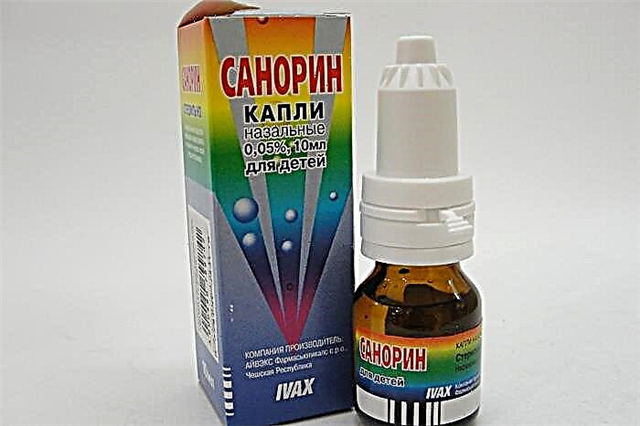In an effort to be born, the child makes his way through the birth canal of the mother, and this process does not always go smoothly. In natural childbirth, the newborn passes through the bone ring of the large and small pelvis. The baby's skull bones are still fragile, and with significant resistance, a cephalohematoma can form.
A cephalohematoma is a collection of blood between the skull bone and the periosteum. The periosteum is a thin plate of connective tissue that tightly covers the bone along the entire contour. With birth trauma, the periosteum is detached from the bone by accumulated blood.
This disease is quite common and occurs in newborn babies in 0.2 - 2.5% of cases.
Causes of cephalohematoma in newborns
During labor, the skin of the head and periosteum is displaced from the bones of the skull, resulting in damage to the subperiosteal vessels (vessels running from the periosteum to the bones of the skull). This is how a hemorrhage forms over the bone.
The reasons for the formation of cephalohematoma can be both from the fetus and from the mother.
From the mother's side:
- anatomically or clinically narrow pelvis (discrepancy between the size of the fetal head and the size of the mother's pelvis);
- rapid or protracted labor;
- use of obstetric aids (forceps, vacuum extractors) during labor;
- discoordination of labor activity;
- exostoses (bone growths) of the pelvic bones, suffered fractures of the pelvic bones;
- the age of the woman in labor is over 35 years old.
From the side of the fetus:
- large body weight (more than 4000 g);
- pathological presentation of the fetus (facial, transverse, pelvic);
- intrauterine malformations (hydrocephalus);
- prolongation of more than 40 weeks (the bones of the fetal skull become dense, which reduces their ability to configure during childbirth).
A more rare cause of cephalohematoma is fetal hypoxia, resulting from entanglement or compression by the umbilical cord, tongue retraction, aspiration of amniotic fluid.
Sometimes subperiosteal hemorrhage can be the first sign of blood disorders with increased bleeding in a newborn (hemophilia, von Willebrand disease).
Clinical manifestation of cephalohematoma
On examination, the cephalohematoma looks like a normal swelling on the baby's head. It can manifest itself in 2 - 3 hours or 2 - 3 days after birth.
 Sizes can vary from 3 to 10 cm in diameter. On palpation (feeling), the tumor is soft, elastic, along the edges there is a dense ridge - this is a thickened periosteum.
Sizes can vary from 3 to 10 cm in diameter. On palpation (feeling), the tumor is soft, elastic, along the edges there is a dense ridge - this is a thickened periosteum.
Cephalohematomas never go beyond one bone. Multiple hematomas affecting two or more parts of the head are very rare. At the same time, the general condition of the baby will not suffer if he does not have concomitant pathologies.
Allocate several degrees of cephalohematoma:
- 1 degree - the diameter of the hematoma is 4 cm or less;
- 2nd degree - from 4.1 to 8 cm;
- Grade 3 - diameter 8 cm or more. With multiple hematomas, the total area of hemorrhages is summed up.
By localization, the parietal, frontal, occipital and temporal cephalohematomas are distinguished.
A combination of cephalohematoma with other injuries is possible:
- with a fracture of the bones of the skull;
- with brain damage (cerebral hemorrhage, epidural hematoma).
Diagnostics
For the diagnosis of cephalohematoma, a physical (external) examination and anamnesis (how the pregnancy and childbirth proceeded) are sufficient.
Nevertheless, it is important to make a differential diagnosis with a generic tumor, hemorrhage under the aponeurosis, cerebral hernia.
In contrast to cephalohematoma, a birth tumor (edema of the subcutaneous tissue) and subgaleal hemorrhage on palpation have a dense pasty consistency, do not have clear dense boundaries and can occupy the area of several bones. A cerebral hernia is a protrusion of the meninges, and sometimes a piece of brain tissue through the fontanelle or the sutures of the skull.
From additional examination methods apply:
- a craniogram (X-ray of the skull bones) to exclude bone injuries in frontal and lateral projections;
- neurosonography (detects lesions in the brain);
- Ultrasound of cephalohematoma (allows you to determine the exact size, excludes cerebral hernia);
- computed tomography (used if brain tissue damage is suspected).
Cephalohematoma in newborns and its treatment
For small cephalohematomas, a conservative treatment method is chosen - they are waiting for the hematoma to resolve on its own. Prescribe calcium gluconate and Vikasol to strengthen the walls of blood vessels and stop bleeding. On average, lysis (resorption) of a hematoma takes 1 - 2 months.
 You can speed up the process with Troxevasin gel. The drug is approved for use in children from birth, it is applied 2 times a day to the scalp.
You can speed up the process with Troxevasin gel. The drug is approved for use in children from birth, it is applied 2 times a day to the scalp.
There is also a surgical method of treatment - puncture of cephalohematoma in newborns. It is indicated for large hematomas (80 mm and more). The procedure lasts about 10 minutes and does not require hospitalization of the child.
The skin is treated with an antiseptic solution, a cephalohematoma is punctured with a syringe and blood is evacuated from the subgaleal space.
After removing the needle, the puncture site is treated with an antiseptic, and an aseptic bandage is applied.
If the cause of cephalohematoma is a blood disease with decreased clotting, then, first of all, it is necessary to begin treatment of the underlying disease.
Cephalohematoma in newborns and its consequences
Ossification of cephalohematoma
7 days after the onset of cephalohematoma, it can be replaced with dense connective tissue, resulting in bone deformation. The defect is only cosmetic and does not cause any harm to health. When the child grows up, the defect will not even be noticeable.
Anemia
If the cephalohematoma is large enough, the baby may develop post-hemorrhagic anemia. Since the volume of circulating blood in a child is small, hemorrhage can cause changes in the peripheral blood.
Usually, anemia is mild and does not require additional treatment. Without continued bleeding, hemoglobin will recover on its own over time.
Jaundice
With a large size of cephalohematoma and with its rapid resorption, the breakdown of erythrocytes is increased, which leads to an increase in bilirubin.
The baby's body does not have time to completely remove it, and bilirubin is deposited in soft tissues, causing the skin and visible mucous membranes to turn yellow. This condition is temporary, similar to physiological jaundice and does not require additional treatment.
Suppuration of cephalohematoma
In case of sedimentation or damage to the cephalohematoma, its infection and the formation of a purulent process may occur. This complication is rare, but one of the most formidable. After all, the inflammatory process of the soft tissues of the head in a newborn can easily pass to the brain tissue.
When suppuration occurs, the skin over the hematoma becomes red, edematous, the body temperature rises to 38 degrees Celsius, the child becomes lethargic, appetite decreases, palpation of the cephalohematoma arises pronounced anxiety.
If you notice at least one of these signs in your baby, you should immediately consult a doctor!
When a cephalohematoma is infected, an emergency operation is indicated - opening the abscess. Sanitation and drainage of the purulent cavity is carried out, local anti-inflammatory therapy is prescribed. With timely access to medical care, all negative consequences can be avoided.
The cephalohematoma itself is not dangerous for a child. It does not affect the nervous system in any way and does not cause a delay in neuropsychic development. But the volumetric education on the baby's head gives him discomfort, so it should to provide special care for newborns with cephalohematoma.
- Firstly, it is necessary to follow all the doctor's prescriptions; one should not resort to independent methods of treatment. Otherwise, instead of resorption of the hematoma, you can get an increase in hemorrhage.
- It is necessary to be very careful with the newborn, avoiding any damage to the head.
- Caps and hats should not be tied tightly on the baby's head, so as not to create additional discomfort.
- It is important to monitor the size of the hematoma over time. With a progressive increase in size, consult a doctor.
- To make the baby sleep comfortably, there are special pads that evenly distribute pressure between the uneven parts of the head.
By following all these simple rules, you will reduce the child's discomfort and reduce the risk of complications.



